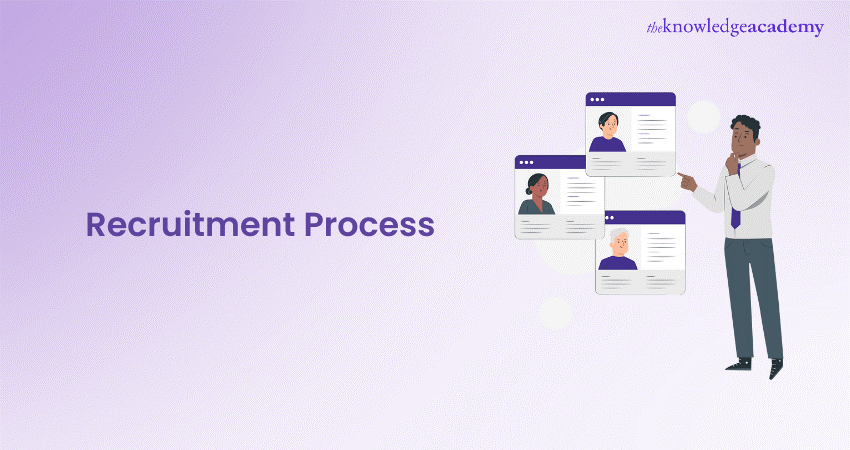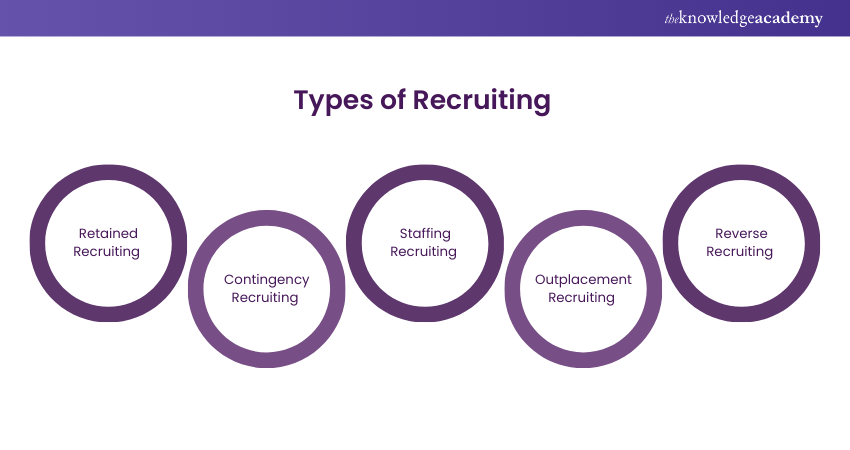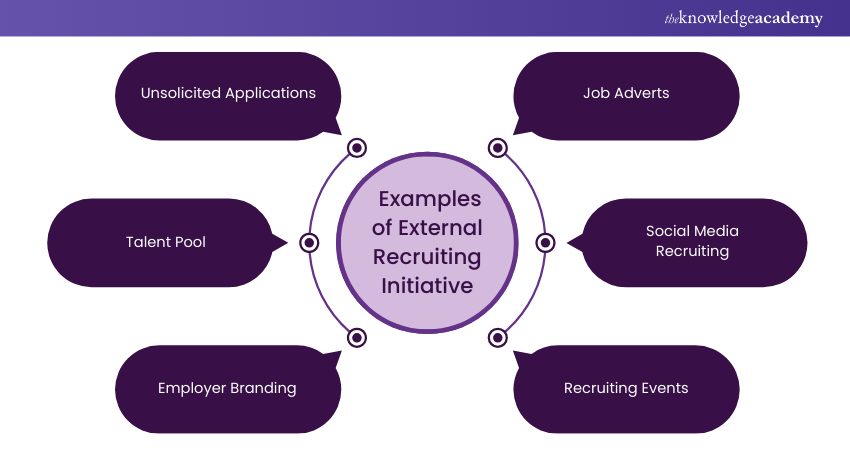We may not have the course you’re looking for. If you enquire or give us a call on +48 221041849 and speak to our training experts, we may still be able to help with your training requirements.
Training Outcomes Within Your Budget!
We ensure quality, budget-alignment, and timely delivery by our expert instructors.

Recruiting the right talent is more than just filling a vacancy - it’s about finding the perfect fit for your team and company culture. A well-structured Recruitment Process not only saves time but also ensures that you’re making informed hiring decisions that can drive your business forward. From crafting the perfect job description to onboarding your new hire, each step in the Recruitment Process plays a critical role. It starts with identifying your hiring needs and attracting the right candidates, followed by screening, interviewing, and evaluating applicants.
Beyond filling a vacancy, a strategic Recruitment Process can be a game-changer for your company. It helps you build a strong, cohesive team that creates a positive work environment and boosts productivity. In this blog, we’ll explore each step in detail and uncover the benefits of investing in a solid Recruitment strategy.
Table of Contents
1) What is the Recruitment Process?
2) Importance of a Recruitment Process
3) Steps Involved in the Recruitment Process
4) Types of Recruiting
5) What is an Example of a Positive Recruiting Process?
6) Benefits of an Effective Recruitment Process
7) Conclusion
What is the Recruitment Process?
The Recruitment Process is a structured approach used to find, attract, and select the best candidates for open positions. It starts with job analysis, followed by sourcing candidates through various channels.
Applicants are then shortlisted and screened via resumes, interviews, and tests. Further interviews assess skills, experience, and cultural fit. The final stage involves extending a job offer and negotiating terms. A well-executed recruitment process ensures the right hires, contributing to the company’s growth and success.

Importance of a Recruitment Process
Recruitment Process is very important for any company to hire a talented group of candidates as quickly and efficiently as possible. This process plays a role of the filter confirming that only those who have corresponding skills, experience and education will be reviewed further to help hire great fit candidates.
Using Application Tracking Systems (ATS), conducting interviews and giving assignments has shortened the process for recruiters to choose candidates but also helps them save costs and time. A structured approach will allow HR Managers to recruit top talent who are potentially the right fit and would demand minimal training. It allows businesses to hire sales personnel with ease thereby bringing in more business and new clients.
In addition, a good recruitment plan assists in keeping the culture of your business intact by hiring employees who have similar values and principles to that of the organisation leading to homogeny at work. At the end of it all, a strong Recruitment Process is not only about hiring but also about setting up a business that flourishes and makes an impact.
Steps Involved in the Recruitment Process
Below are the seven key steps involved in the Recruitment Process:
1) Identify Vacancies and Hiring Needs
a) Define the Role: Determine what the ideal candidate looks like for this position.
b) Survey Employees: Ask employees close to the position about the role's fit within the department, gaps or missing skills, and essential versus nice-to-have qualities.
c) Review Organisation Chart: Use an organisational chart to understand existing skills and where the new employee fits.
d) Update Job Description: If filling an existing position, ensure the job description reflects current responsibilities and skills.
2) Create a Job Description
a) First Impressions: Make the job description appealing and accurate.
b) Content to Include:
1) Job title and department
2) Location
3) Hours (full-time, part-time, shift schedule)
4) Summary of the position (objectives, responsibilities, relation to the company)
5) Minimum requirements
6) Preferred experience and qualifications
7) Description of your company and its mission
8) Salary and benefits
c) Keep it Concise: Focus on essential qualities and refine the content to be clear and simple.
3) Candidate Search
a) Internal Search: Leverage your employee network for referrals. Happy employees often know great candidates. Offer incentives for successful referrals.
b) External Search: Use online job boards, professional networking sites like LinkedIn, and industry-specific resources. Consider attending career fairs or partnering with recruitment agencies for specialised roles.
4) Candidate Screening
a) Pre-screening: Use your job description to filter applications. Focus on candidates whose skills and experience align with your "must-haves." Online screening tools can automate this step.
b) In-depth Reviews: Prioritise quality over quantity. Look for strong communication skills and specific achievements in resumes and cover letters.
c) Phone Screenings: Assess enthusiasm, communication style, and basic qualifications through phone interviews. This helps identify candidates who are a good cultural fit and genuinely interested in the role.
5) Interview and Selection
a) Create a Comfortable Environment: Ease interview tension by reserving a quiet room (even for virtual interviews) and explaining the process upfront.
b) Gather Multiple Perspectives: Have more than one person interview the candidate to get different viewpoints. Review resumes and other materials beforehand to keep the interview concise.
c) Standardise Questions, Collect Feedback, and Select: Ask similar questions to each candidate for objective comparison. Allow candidates to ask questions about the company. Collect feedback from all interviewers quickly, with the hiring manager making the final decision to select the best fit for the role.
6) Job Offer
a) Present a Clear and Detailed Job Offer: Provide the candidate with specific information about the position, salary, benefits, and job conditions to ensure transparency.
b) Create a Positive First Impression: A well-structured offer reflects the organisation’s value of the candidate and helps keep them engaged, setting the tone for a successful onboarding experience.
7) Onboarding
a) Create a Seamless Onboarding Process: Use automated tools, templates, and checklists to set up new employees for success. Onboarding is key to turning a new hire into a productive team member. Have a clear plan with all necessary paperwork, benefits info, and IT setup ready to ensure a smooth first day.
b) Foster Team Spirit and Set Expectations: Introduce the new hire to their colleagues and organise team-building activities to help them feel connected. Clearly define their role and responsibilities, and provide a roadmap for their first few weeks, including training and mentorship, to keep them engaged and prepared.
Boost your hiring skills! Gain expert insights with our Recruitment Training. Register today and lead with confidence.
Types of Recruiting
Companies use different types of recruiting strategies to allure excellent employees. You can pick the one that suits your needs and is most in sync with what you want to achieve from hiring. Some of the most common forms include:

1) Retained Recruiting
Retained recruiting is where you pay a recruiting company from the start of your hiring process. This agency works exclusively for your business and puts its resources solely into finding the best possible candidates suited for that position. This is a common model for senior or niche roles, where the agency's experience in that sector and singular attention can really help find the right fit.
2) Contingency Recruiting
Contingency recruiting is when an outside agency is hired to find the right candidate for a role, but they are only paid if that person fills the actual position. In non-exclusive recruitment, several agencies can compete for the same position. This model is performance-based, so it offers a very affordable way for companies to raise awareness without any upfront expense.
3) Staffing Recruiting
Staffing recruiting is based on short-term or temporary positions. Recruiters who work in this area are capable of immediately placing a jobseeker with companies looking to fill short-term or seasonal help as part of their agency offerings. It is perfect for businesses in need of immediate skills personnel or to manage a wave of work.
4) Outplacement Recruiting
Outplacement recruiting is a supportive and developmental approach by which firms provide their terminated employees with opportunities to find other jobs. Often part of severance packages, this type of recruiting company even takes care in assisting those that have been laid off with career advising and helping them find employment elsewhere. It offers a compassionate way for businesses to let someone go while also keeping their reputation intact.
5) Reverse Recruiting
Reverse recruiting is the idea of candidates being proactive and reaching out to hiring managers first. This happens when a candidate applies to work for the company, often in roles that suit their own skills. You will often see this sort of recruiting when a candidate truly believes in the vision of a company and wants to forge opportunities for themselves before there are official roles open.
Learn how to become an HR Advisor with our Certified HR Advisor Course – Register now!
What is an Example of a Positive Recruiting Process?
An effective recruitment process focuses on providing the best experience for candidates, ensuring clear communication, timely responses, and seamless workflows. By simplifying and automating tasks where possible, you create a smooth and pleasant journey that leaves a positive impression of your company.
To build a strong team, sourcing, attracting, and shortlisting the right candidates is key. Ensure a steady flow of applicants by considering both internal and external options during recruitment planning.
Here are the examples for internal and external recruiting initiatives:
Examples of Internal Recruiting Initiatives
The best candidate may already be a part of your company. Faster time to hire — when you have a pool of talented, known employees at your fingertips, it speeds up the hiring process! Happier internal candidates are also more likely to stay longer and perform better in their new roles. Here are some strategies:
a) Internally Advertising Positions: You are more likely to grow your career from within by promoting job openings in your organisation and helping to retain talented employees.
b) Employee Transfers: These can help address workforce planning needs by promoting internal transfers. To ensure success and satisfaction, it is important to establish that the employees not only desire but are also an integral part of the transfer process.
Examples of External Recruiting Initiative
External recruiting involves your organisation reaching out to applicants from outside, widening the net for a potentially larger talent pool. Below are a couple of effective methods:

a) Unsolicited Applications: Encourage potential hires to apply even when there is no listing open. This approach helps generate a pipeline of potential talent ready for future openings.
b) Talent Pool: Follow up with past applicants, prospects, and your network. It also helps with faster identification of potential candidates as and when new roles are released.
c) Employer Branding: A powerful employer brand that attracts both active and passive candidates. Highlighting your corporate culture, beliefs, and benefits can help sell your organisation to top talent.
d) Job Adverts: The most common method—job adverts—are placed on various platforms such as job boards, company sites, and industry publications.
e) Social Media Recruiting: Leverage social media channels like LinkedIn, Twitter, and Facebook to connect with possible candidates and showcase your company culture.
f) Recruiting Events: Participate in career fairs, campus events, or similar industry-based forums to meet candidates face-to-face. These events provide direct interaction with talent and corporate sponsorship opportunities.
Benefits of an Effective Recruitment Process
Having a reliable Recruitment Process can greatly increase your chances of quickly finding the right professional to help your business grow. Here are some key benefits:
a) Time Efficiency: A tailored Recruitment Process can streamline the application and selection stages, creating a positive candidate experience. Becoming a recruiter involves managing the process and maintaining and delivering to a high standard.
b) Employee Engagement: Engaged employees are motivated and enthusiastic. A Recruitment Process that aligns with your personal specifications helps predict a candidate's potential dedication. Interviews are crucial for assessing their enthusiasm.
c) Higher Recruiting Standards: A well-designed Recruitment Process identifies gaps in your current strategy, improving the quality of hires. Regularly reviewing and updating the strategy ensures you attract top talent and remain an attractive employer.
d) Improved Performance: A solid selection process enhances the performance of both your recruitment strategy and your recruiters. With clear guidance, your team can efficiently find and evaluate suitable candidates.
Conclusion
A well-structured Recruitment Process goes beyond simply filling open positions. A strong Recruitment Process is an investment in your organisation's future. It helps you build a cohesive, talented team that can drive growth, foster innovation, and uphold your company’s values. By focusing on each step and recognising the benefits, you not only secure the best candidates but also create a work environment that supports long-term success and satisfaction for everyone involved.
Learn more about recruiting with our Recruiting for Success Training – Join today!
Frequently Asked Questions

To make the hiring process more efficient, use Application Tracking Systems (ATS), streamline job descriptions, pre-screen candidates, and automate scheduling. Leverage video interviews, set clear timelines, and maintain consistent communication to reduce delays and improve candidate flow.

The hiring process directly affects candidate experience by shaping their perception of your company. A smooth, transparent, and respectful process leaves a positive impression, while delays, poor communication, or unclear expectations can lead to dissatisfaction and a negative view, affecting your employer’s brand.

The Knowledge Academy takes global learning to new heights, offering over 30,000 online courses across 490+ locations in 220 countries. This expansive reach ensures accessibility and convenience for learners worldwide.
Alongside our diverse Online Course Catalogue, encompassing 19 major categories, we go the extra mile by providing a plethora of free educational Online Resources like News updates, Blogs, videos, webinars, and interview questions. Tailoring learning experiences further, professionals can maximise value with customisable Course Bundles of TKA.

The Knowledge Academy’s Knowledge Pass, a prepaid voucher, adds another layer of flexibility, allowing course bookings over a 12-month period. Join us on a journey where education knows no bounds.

The Knowledge Academy offers various Recruitment Courses, including Recruiting for Success Training, Recruitment Training and Recruitment Assessment and Selection Training. These courses cater to different skill levels, providing comprehensive insights into HR Skills.
Our HR Resources Blogs cover a range of topics related to recruitment, offering valuable resources, best practices, and industry insights. Whether you are a beginner or looking to advance your hiring skills, The Knowledge Academy's diverse courses and informative blogs have got you covered.
Upcoming HR Resources – Learn about Human Resources Batches & Dates
Date
 Recruiting for Success Training
Recruiting for Success Training
Fri 14th Feb 2025
Fri 11th Apr 2025
Fri 13th Jun 2025
Fri 15th Aug 2025
Fri 10th Oct 2025
Fri 12th Dec 2025







 Top Rated Course
Top Rated Course


 If you wish to make any changes to your course, please
If you wish to make any changes to your course, please


